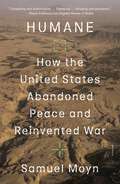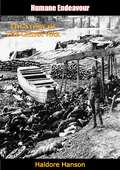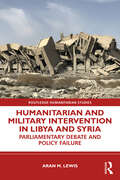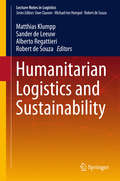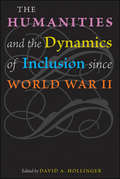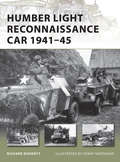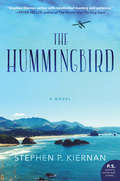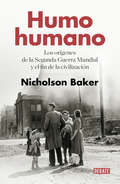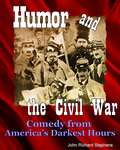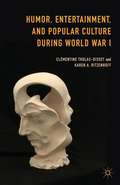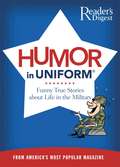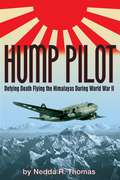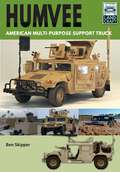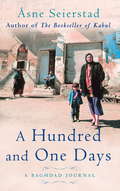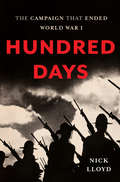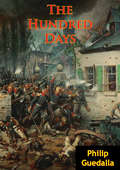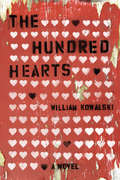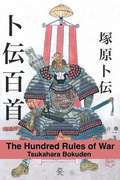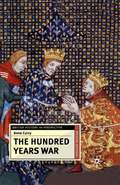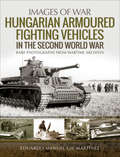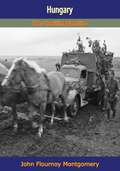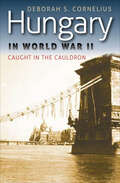- Table View
- List View
Humane: How the United States Abandoned Peace and Reinvented War
by Samuel MoynA prominent historian exposes the dark side of making war more humaneIn the years since 9/11, we have entered an age of endless war. With little debate or discussion, the United States carries out military operations around the globe. It hardly matters who’s president or whether liberals or conservatives operate the levers of power. The United States exercises dominion everywhere.In Humane: How the United States Abandoned Peace and Reinvented War, Samuel Moyn asks a troubling but urgent question: What if efforts to make war more ethical—to ban torture and limit civilian casualties—have only shored up the military enterprise and made it sturdier? To advance this case, Moyn looks back at a century and a half of passionate arguments about the ethics of using force. In the nineteenth century, the founders of the Red Cross struggled mightily to make war less lethal even as they acknowledged its inevitability. Leo Tolstoy prominently opposed their efforts, reasoning that war needed to be abolished, not reformed—and over the subsequent century, a popular movement to abolish war flourished on both sides of the Atlantic. Eventually, however, reformers shifted their attention from opposing the crime of war to opposing war crimes, with fateful consequences.The ramifications of this shift became apparent in the post-9/11 era. By that time, the US military had embraced the agenda of humane war, driven both by the availability of precision weaponry and the need to protect its image. The battle shifted from the streets to the courtroom, where the tactics of the war on terror were litigated but its foundational assumptions went without serious challenge. These trends only accelerated during the Obama and Trump presidencies. Even as the two administrations spoke of American power and morality in radically different tones, they ushered in the second decade of the “forever” war.Humane is the story of how America went off to fight and never came back, and how armed combat was transformed from an imperfect tool for resolving disputes into an integral component of the modern condition. As American wars have become more humane, they have also become endless. This provocative book argues that this development might not represent progress at all.
Humane Endeavour: The Story of the China War
by Haldore HansonAs a foreign correspondent in the 1930’s, Haldore Hanson covered the Chinese civil war and the invasion of China by Japan. Traveling rural roads on bicycle, he rotated among the warring forces and was occasionally arrested by one side or the other.The present volume, “Humane Endeavor”, which was first published in 1939, was praised as a rare close-up from the remote front lines. Owing to his expertise, the State Department hired him as an official in 1942. After World War II, he became assistant director of the Point Four development aid program for Asia.“A complete coverage of the war years, with pictures of outstanding personalities. [Hanson] reports on the fall of Peiping, on war on the Mongel front, on the sieges of Shanghai, Nanking, on Japanese atrocities, war in the air, finance and man power, Japanese rule in conquered areas, guerilla warfare, border republics, [and] experiences with the 8th Route Army. Interesting reading it holds the interest throughout, and has the vitality of a first-hand record.”—Kirkus Review
Humanitarian and Military Intervention in Libya and Syria: Parliamentary Debate and Policy Failure (Routledge Humanitarian Studies)
by Aran M. LewisThis book explores the contradictions in Britain’s humanitarian and military intervention in Libya and Syria, beginning with the Arab spring in 2010. The book assesses the contradictions between the expressed humanitarian intentions of British military interveners and the impact of their actions on the putative beneficiary states. It demonstrates that, as a result of foreign intervention, both Libya and Syria were rendered non-functional as unitary nations and suffered extensive harm to their people and infrastructure. To evaluate the effectiveness and credibility of humanitarian warfare, the author conducts a thematic analysis of debates on Libya and Syria in the House of Commons. The book provides a detailed study of intentions and motives expressed by Members of Parliament, of consequent British state actions and their outcomes, and of MPs’ reactions to outcomes. It provides ample evidence of duplicity, insincerity, indifference to harm, and ulterior motives for violence that undermine moral claims and support the argument that, although humanitarian warfare may be possible, the leading Western activist states (Britain, France, and the USA) are poorly qualified to carry it out. Illustrating a systemic failure of strategy and accountability in British foreign policy, this book will be of interest to scholars and graduates of Humanitarian Studies, International Relations and Military Studies.
Humanitarian Logistics and Sustainability
by Matthias Klumpp Sander Leeuw Alberto Regattieri Robert SouzaThis contributed volume combines conceptual and strategic research articles dealing with the "why" and "to what end" of sustainable operations in humanitarian logistics, as well as operational research contributions regarding the "how" from the United Nations as well as from researchers and organizations from different countries (Germany, Australia, Singapore, Netherlands, Italy, Denmark, Jordan). The target audience primarily comprises research experts, decision makers and practitioners in the field, but the book may also be beneficial for graduate students.
The Humanities and the Dynamics of Inclusion since World War II
by David A. HollingerThe role played by the humanities in reconciling American diversity—a diversity of both ideas and peoples—is not always appreciated. This volume of essays, commissioned by the American Academy of Arts and Sciences, examines that role in the half century after World War II, when exceptional prosperity and population growth, coupled with America's expanded political interaction with the world abroad, presented American higher education with unprecedented challenges and opportunities. The humanities proved to be the site for important efforts to incorporate groups and doctrines that had once been excluded from the American cultural conversation.Edited and introduced by David Hollinger, this volume explores the interaction between the humanities and demographic changes in the university, including the link between external changes and the rise of new academic specializations in area and other interdisciplinary studies.This volume analyzes the evolution of humanities disciplines and institutions, examines the conditions and intellectual climate in which they operate, and assesses the role and value of the humanities in society.Contents:John Guillory, "Who's Afraid of Marcel Proust? The Failure of General Education in the American University" Roger L. Geiger, "Demography and Curriculum: The Humanities in American Higher Education from the 1950s through the 1980s" Joan Shelley Rubin, "The Scholar and the World: Academic Humanists and General Readers"Martin Jay, "The Ambivalent Virtues of Mendacity: How Europeans Taught (Some of Us) to Learn to Love the Lies of Politics"James T. Kloppenberg, "The Place of Value in a Culture of Facts: Truth and Historicism"Bruce Kuklick, "Philosophy and Inclusion in the United States, 1929–2001"John T. McGreevy, "Catholics, Catholicism, and the Humanities, 1945–1985"Jonathan Scott Holloway, "The Black Scholar, the Humanities, and the Politics of Racial Knowledge Since 1945"Rosalind Rosenberg, "Women in the Humanities: Taking Their Place"Leila Zenderland, "American Studies and the Expansion of the Humanities"David C. Engerman, "The Ironies of the Iron Curtain: The Cold War and the Rise of Russian Studies"Andrew E. Barshay, "What is Japan to Us"?Rolena Adorno, "Havana and Macondo: The Humanities Side of U.S. Latin American Studies, 1940–2000"
Humber Light Reconnaissance Car 1941-45
by Henry Morshead Richard DohertyThe iconic vehicle of the British Army's Reconnaissance Corps during World War II, the Humber Light Reconnaissance Car (LRC) saw service in several theatres of war between 1941 and 1945. The Humber LRC gave excellent service to the Reconnaissance Corps with its agility, speed and height proving to be invaluable assets to the units that operated it. Using numerous photographs, and newly commissioned artwork, this book looks at the development of the LRC, its use by the Reconnaissance Corps and its importance to British infantry divisions in the theater in which it served.
The Hummingbird
by Stephen P. KiernanDeborah Birch is a seasoned hospice nurse who never gives up--not with her patients, not in her life. But her skills and experience are fully tested by the condition her husband, Michael, is in when he returns from his third deployment to Iraq. Tormented by nightmares, anxiety, and rage, Michael has become cold and withdrawn. Still grateful that he is home at last, Deborah is determined to heal him and restore their loving, passionate marriage.But Michael is not her only challenge. Deborah's primary patient is Barclay Reed, a retired history professor and fierce curmudgeon. An expert on the Pacific Theater of World War II, Barclay is suffering from terminal kidney cancer and haunted by ghosts from his past, including the academic scandal that ended his career.Barclay's last wish is for Deborah to read to him from his final and unfinished book--a little-known story from World War II that may hold the key to helping Michael conquer his demons. Together, nurse, patient, and soldier embark on an unforgettable emotional journey that transforms them all, offering astonishing insights into life and death, suffering and finding peace.Told with piercing empathy and heartbreaking realism, The Hummingbird is a masterful story of marital commitment, service to country, the battles we fight for those we love, learning to let go, and finding absolution through wisdom and acceptance.
The Hummingbird: A Novel
by Stephen P. KiernanFrom the author of the acclaimed The Curiosity comes a compelling and moving story of compassion, courage, and redemption.Deborah Birch is a seasoned hospice nurse whose daily work requires courage and compassion. But her skills and experience are tested in new and dramatic ways when her easygoing husband, Michael, returns from his third deployment to Iraq haunted by nightmares, anxiety, and rage. She is determined to help him heal, and to restore the tender, loving marriage they once had.At the same time, Deborah's primary patient is Barclay Reed, a retired history professor and expert in the Pacific Theater of World War II whose career ended in academic scandal. Alone in the world, the embittered professor is dying. As Barclay begrudgingly comes to trust Deborah, he tells her stories from that long-ago war, which help her find a way to help her husband battle his demons.Told with piercing empathy and heartbreaking realism, The Hummingbird is a masterful story of loving commitment, service to country, and absolution through wisdom and forgiveness.
Humo humano: Los orígenes de la Segunda Guerra Mundial y el fin de la civilización
by Nicholson BakerUn libro inolvidable que tendrá un profundo efecto sobre nuestra visión de los acontecimientos históricos que culminaron en la Segunda Guerra Mundial y que contiene un sentido lamento por la irreparable pérdida que la humanidad se ha causado a sí misma. No es fácil aplicar una luz distinta a acontecimientos muy conocidos, pero eso es lo que logra Nicholson Baker en esta extraordinaria historia de los orígenes de la Segunda Guerra Mundial. A partir de fragmentos extraídos de periódicos y revistas de la época, discursos radiofónicos, panfletos, diarios y libros de memorias, entre otras fuentes, ordenados cronológicamente, Baker crea un mosaico de momentos decisivos, de barbarie, sufrimiento y compasión, de iluminadores destellos sobre escenas cotidianas e históricas. Una obra coral que, setenta años después, nos deja oír las voces de los líderes políticos y sus opositores, escritores, periodistas, militares y pacifistas, testimonios que ilustran de manera conmovedora el imparable y horrible avance hacia la guerra global y el holocausto. Elogiado por la crítica y los lectores por su capacidad de observación y su límpida prosa, Baker ha creado una narración que se desarrolla elegante, trágica y convincentemente. Reseñas:«Este libro absolutamente extraordinario -imposible de abandonar, imposible de olvidar- podría convertirse en el argumento más convincente en favor de la paz jamás construido. Este inventario meticulosamente seleccionado por Nicholson Baker muestra con asombroso y fascinante detalle el imparable descenso de la humanidad hacia la locura de la guerra.»Simon Winchester «Lentamente, a medida que lees, como consecuencia de la variedad en el tono y de la naturaleza trágica o terrible de la cita, así como de lo certero de su elección, Humo humano se vuelve apasionante y fascinante. Sin embargo, las cuestiones que Baker quiere plantear y el descarnado estilo que emplea para hacerlo, hacen de su libro una contribución seria y convencida al debate sobre el pacifismo. Ha creado un apasionante y elocuente ataque a la idea de que la elección deliberada de objetivos civiles pueda estar nunca justificada.»Colm Tóibín, The New York Times «Baker se vuelve especialmente interesante y provocativo al intentar demostrar que los terribles horrores del nazismo reafirman la postura pacifista.»Piers Brendon, The Guardian «Un libro que me ha encantado. Fascinante, sobrecogedor, instructivo, apasionante.»A.C. Grayling, The Times «Un fascinante y audaz experimento histórico literario, hay que aplaudir la originalidad y sutileza de su enfoque. Humo humano merece una entusiasta acogida.»Geoff Dyer, The Financial Times «Un texto coral en el que son los protagonistas quienes toman la palabra. [...]El resultado es perturbador, como si, de pronto, hubieran sido convocados a escena todos los silencios, todos los equívocos imprescindibles para que la historia de la II Guerra Mundial se pueda seguir contando como hasta ahora.»José María Ridao, El País
Humor and the Civil War: Comedy from America's Darkest Hours
by Alf Burnett Ambrose Bierce Artemus Ward Bret Harte John Richard Stephens Josh Billings Mark Twain Orpheus C. Kerr Petroleum V. NasbyPresident Abraham Lincoln said he wouldn't have been able to survive the Civil War without his jokes and amusing stories. That war was by far the greatest struggle the United States has ever faced. More Americans died in the Civil War than in all of the other wars combined. Americans--both North and South--endured very hard times and suffered terrible tragedies, and yet they maintained their sense of humor. They even printed jokes on the front page of newspapers, mixed in with the top news stories.Mark Twain is, of course, the most famous humorist of the nineteenth century, but there were others who were famous then that aren't quite as well known now. What they wrote still holds up well today and deserves to be revived. These humorists include Abraham Lincoln's favorites: Artemus Ward, Orpheus C. Kerr, and Petroleum V. Nasby. There's also Josh Billings, Alf Burnett, Bret Harte, and Ambrose Bierce. Even Abraham Lincoln himself was noted for his many funny stories and jokes. And people were still writing humorous stories involving the war at the end of the century, when O. Henry came along. This book includes all of them, along with some rare pieces by Mark Twain.Here's just one example: "During the war a Southern editor, wishing to compliment Confederate General Pillow, wrote a notice of him, in which the General was called the 'battle-scarred hero,' but the typesetter made the phrase read, the 'battle-scared hero.' On reading the notice, the irate soldier hied himself to the newspaper office, and demanded a correction. This was promised, and the next day's paper spoke of General Pillow as a 'bottle-scarred hero.'"This book draws together the very best of the Civil War's humor, parodies, burlesques, funny anecdotes, jokes, satire, personal experiences, tall tales, and wit. Retrieved through extensive research from books, newspapers, speeches, letters, and personal diaries, some of this material hasn't been published since the war. (345 pgs., 8 ill.)
Humor, Entertainment, and Popular Culture during World War I
by Clémentine Tholas-Disset Karen A. RitzenhoffHumor and entertainment were vital to the war effort during World War I. While entertainment provided relief to soldiers in the trenches, it also built up support for the war effort on the home front. This book looks at transnational war culture by examining seemingly light-hearted discourses on the Great War.
Humor in Uniform: Funny True Stories about Life in the Military
by Editors of Reader's DigestIf laughter is the best medicine, then look no further to cure whatever ails you. The column “Offbase,” formally known as “Humor in Uniform,” has appeared in the Reader's Digest magazine for over half a century, and has published more than 3,500 jokes, quotes, and funny stories from the more than a million readers who have submitted them. This volume—from the world’s #1 source of humor—contains laugh-out-loud gems from one of Reader’s Digest’s most popular columns.<p> This side-splitting collection of humor delivers hundreds of the best jokes, anecdotes, cartoons, quotes, and stories from men and women in the armed forces or their families proving that life is often funnier than fiction.
Hump Pilot
by Nedda R. ThomasNedda R. Thomas flies her father's war through his remembrance in her superlative biography, "Hump Pilot: Defying Death Flying the Himalayas in World War II." In a lucid, informative, well-paced style she conveys the surreal beauty and deadly dangers of the Hump Theater, a story of courage and historical significance that takes our hearts into the sky. A seminary-trained spiritual director, Nedda grew up in the U.S., Paris, France, and the Far East. She has the rare distinction of being one of the very few women ever to write about men on combat-rated air missions in that world conflict. Her articles explore the work of a variety of creative and well-known figures. A poet and former editor, she speaks on military and women's history, and always, her passion for human rights, particularly for exploited children.
Humvee: American Multi-Purpose Support Truck (LandCraft)
by Ben SkipperWith its characteristic wide track, low silhouette and its distinctively deep exhaust note the Humvee sets itself apart from the range of light utility trucks it replaced. Fully air-portable, the Humvee features an aluminum body seated on a steel ladder chassis, powered by a 190hp V8 engine. Introduced into service in 1985, the Humvee remained pretty much unnoticed until its baptism of fire during the invasion of Panama in Operation Just Cause. It wasn’t until almost a year later, in Operation Desert Shield and Desert Storm that the Humvee really came into the public eye. As a result of its newly found fame its manufacturer, American Motors General, started to produce a civilized version for public consumption, with sales and profile boosted by Hollywood patronage. At the same time the Humvee continued to serve in some of the most dangerous US operations undertaken to date. From the streets of Mogadishu to the Balkans, the Humvee developed into a vehicle far removed from its original design intentions. With some 17 variants now in service, from the basic troop carrier to the awesome Avenger Anti-Aircraft system, this Humvee LandCraft title provides the modeler with a rich vein of inspirations and subject. This title looks at the process behind the design and development of the Humvee and how American Motors General were able to fulfill a complex design brief to deliver a single vehicle that was able to replace a host of in-service vehicles. This title will chart how the Humvee grew from a light utility truck into a versatile platform whose modesty hides its potential. With its specially designed track, impressive ground clearance, waterproofed electronics and ability to carry a one ton load, the first Humvees were light years ahead of the vehicles they replaced. With its unique suspension and transmission systems to its unique engine arrangement this 4x4 is capable of feats normally only afforded to tracked vehicles. With some 17 versions in US service the Humvee fulfills its traditional role as cargo and troop carrier as well as special-weapons platform, ambulances, Direct Air Support vehicles and communications shelter vehicles. After 35 years of service the Humvee has changed from soft skinned run-about to a lightly armored force protection asset. Fitted with a larger engine, interchangeable armor, specially designed escape windows and a unique blast chimney, the Humvee’s story is indeed proof that development of military vehicles never stops. For the modeler there is nothing more important than the little things and this image-rich section of LandCrafts’ Humvee title delivers the goods. Filled with crisp images that chart the Humvee’s development, combined with informative accompanying text, forms an enviable visual guide for the enthusiast and modeler alike.
A Hundred And One Days: A Baghdad Journal - from the bestselling author of The Bookseller of Kabul
by Asne SeierstadA fascinating, personal and insightful account of the Iraq war from the bestselling author of THE BOOKSELLER OF KABULIn January 2003 Åsne Seierstad entered Baghdad on a ten-day visa. She was to stay for over three months, reporting on the war and its aftermath. A Hundred and One Days is her compelling account of a city under siege, and a fascinating insight into the life of a foreign correspondent. An award-winning writer, Seierstad brilliantly details the frustrations and dangers journalists faced trying to uncover the truth behind the all-pervasive propaganda. She also offers a unique portrait of Baghdad and its people, trying to go about their daily business under the constant threat of attack. Seierstad's passionate and erudite book conveys both the drama and the tragedy of her one hundred and one days in a city at war.'Åsne Seierstad is the supreme non-fiction writer of her generation' Luke Harding
A Hundred And One Days: A Baghdad Journal - from the bestselling author of The Bookseller of Kabul
by x Asne SeierstadA fascinating, personal and insightful account of the Iraq war from the bestselling author of THE BOOKSELLER OF KABULIn January 2003 Åsne Seierstad entered Baghdad on a ten-day visa. She was to stay for over three months, reporting on the war and its aftermath. A Hundred and One Days is her compelling account of a city under siege, and a fascinating insight into the life of a foreign correspondent. An award-winning writer, Seierstad brilliantly details the frustrations and dangers journalists faced trying to uncover the truth behind the all-pervasive propaganda. She also offers a unique portrait of Baghdad and its people, trying to go about their daily business under the constant threat of attack. Seierstad's passionate and erudite book conveys both the drama and the tragedy of her one hundred and one days in a city at war.'Åsne Seierstad is the supreme non-fiction writer of her generation' Luke Harding
Hundred Days: The Campaign That Ended World War I
by Nick LloydIn the late summer of 1918, after four long years of senseless, stagnant fighting, the Western Front erupted. The bitter four-month struggle that ensued--known as the Hundred Days Campaign--saw some of the bloodiest and most ferocious combat of the Great War, as the Allies grimly worked to break the stalemate in the west and end the conflict that had decimated Europe. In Hundred Days, acclaimed military historian Nick Lloyd leads readers into the endgame of World War I, showing how the timely arrival of American men and materiel--as well as the bravery of French, British, and Commonwealth soldiers--helped to turn the tide on the Western Front. Many of these battle-hardened troops had endured years of terror in the trenches, clinging to their resolve through poison-gas attacks and fruitless assaults across no man’s land. Finally, in July 1918, they and their American allies did the impossible: they returned movement to the western theater. Using surprise attacks, innovative artillery tactics, and swarms of tanks and aircraft, they pushed the Germans out of their trenches and forced them back to their final bastion: the Hindenburg Line, a formidable network of dugouts, barbed wire, and pillboxes. After a massive assault, the Allies broke through, racing toward the Rhine and forcing Kaiser Wilhelm II to sue for peace. An epic tale ranging from the ravaged fields of Flanders to the revolutionary streets of Berlin, Hundred Days recalls the bravery and sacrifice that finally silenced the guns of Europe.
The Hundred Days [Illustrated Edition]
by Philip GuedallaIllustrated with 30 maps, portraits and diagrams of the Waterloo CampaignPhilip Guedalla was a British barrister, nut he was better known as a popular historical and biographical writer. His subjects were many and varied, but he had a noted inclination toward European subjects and particularly the history of France. For this volume he chose as his subject the "Hundred Days" -- the return of the Emperor Napoleon from exile on Elba to his defeat at Waterloo and his final banishment to St. Helena. Eschewing national bias, the author sums up the dramatic events with wit, panache in his inimitable style.
The Hundred Hearts
by William Kowalski<p>2014 Thomas Raddall Atlantic Fiction Award — Winner <p>On April 7, 2005, an I.E.D. blast in Afghanistan alters the course of Jeremy Merkin’s life forever. <p>Still grieving the loss of his best friend, who was killed by the explosion, and nursing the physical and psychological wounds of the war, Jeremy returns home to find that nothing has changed, and yet everything is different. Living in the basement of a house he shares with his grandparents, mother, and mentally-challenged cousin, Henry, Jeremy smokes marijuana to combat his constant pain. He begins a career as a high school teacher, but memories of the war, the physical limitations caused by his injuries and a criminal accusation threaten to end his teaching career before it’s even begun. After Helen, the matriarch of the family, dies in her sleep, the already-dysfunctional Merkin clan comes unglued. Jeremy contacts his father, who lives in a local mental institution, to seek advice, only to discover that his grandfather has been hiding a dark secret from his family. His discovery of the secret alters the way he sees his family, and himself, forever. Amidst all this chaos, his cousin runs away from home to find his mother in New York City. Knowing Henry can’t possibly survive the trip on his own, Jeremy races across the country to find him. While in New York, Jeremy’s world is altered yet again, as more family secrets are uncovered, this time with dreadful consequences. The Hundred Hearts is a darkly funny story of the courage required to carry on after coming home, and the redemptive power of accepting and revealing our own secrets in order to move forward.</p>
The Hundred Rules of War
by Tsukahara Bokuden Eric ShahanA book by a veteran Samurai to young warriors who had not tasted battle. The man known as a sword saint, Tsukahara Bokuden 1489-1571, composed this work seventy-five years before Miyamoto Musashi's Book of Five Rings. Bokuden studied Tenshin Shoden Katori Shinto School and later founded the Kashima Shinto School of sword fighting. This book, which consists of a hundred songs, was transmitted to Samurai who had not yet fought in battle. In the early 1600s a forward was written by the Zen Priest Takuan Soho. Later the eighth Tokugawa Shogun Yoshimune added an introduction. This is the first English translation of this work and it is presented beside the original Japanese brush script. The English will be on the facing page. According to the afterward, for several generations this document was only transmitted to only one other person.
The Hundred Years War
by Anne CurryAlthough the term 'Hundred Years War' was not coined until the 1860s, the Anglo-French conflicts of the later Middle Ages have long been of interest to historians. A fundamental question remains - was this a feudal war fought over ancient English rights in Gascony, or was it a dynastic war in which English kings battled for the crown of France itself? This book, now fully revised and updated to take account of the latest scholarship, examines the origins and phases of the war and explores the trends in historical opinion from the fourteenth century to the present day. Anne Curry provides a straightforward narrative of English involvement in France, placing the well known military events in their diplomatic context. By focusing on the treaties of 1259, 1360 and 1420, Curry argues that there was not one 'hundred year war' but rather three separate yet linked conflicts, all with significant implications for the European scene as a whole, and for Anglo-French relations in the centuries to come.
Hungarian Armoured Fighting Vehicles in the Second World War (Images of War)
by Eduardo Manuel MartínezThis WWII history vividly captures the Hungarian tanks and military vehicles that fought in Central and Eastern Europe through rare wartime photographs. The Kingdom of Hungary emerged from the Great Depression as a staunch ally of Germany and Italy. In the Second World War, the Central European country not only organized its armed forces in support of the Axis Powers, but also developed its own military industry to supply weapons and equipment to its troops. The Hungarian military produced all kinds of weapons, vehicles and armored vehicles, although they were generally under-gunned and under-armored. This book explores Hungary's participation in the Second World War through superb photographs showcasing its varieties of armored fighting vehicles. Wartime images take the reader from the beginning of the USSR campaign all the way to the bloody Siege of Budapest and the last clashes in Austrian and Slovenian territory before the army's unconditional surrender.
Hungarian Armoured Fighting Vehicles in the Second World War (Images of War)
by Eduardo Manuel MartínezThis WWII history vividly captures the Hungarian tanks and military vehicles that fought in Central and Eastern Europe through rare wartime photographs. The Kingdom of Hungary emerged from the Great Depression as a staunch ally of Germany and Italy. In the Second World War, the Central European country not only organized its armed forces in support of the Axis Powers, but also developed its own military industry to supply weapons and equipment to its troops. The Hungarian military produced all kinds of weapons, vehicles and armored vehicles, although they were generally under-gunned and under-armored. This book explores Hungary's participation in the Second World War through superb photographs showcasing its varieties of armored fighting vehicles. Wartime images take the reader from the beginning of the USSR campaign all the way to the bloody Siege of Budapest and the last clashes in Austrian and Slovenian territory before the army's unconditional surrender.
Hungary: The Unwilling Satellite
by John Flournoy MontgomeryIn 1947, the former U.S. Minister to Hungary, John Flournoy Montgomery, published these heartfelt memoirs of his Budapest days during World War II. The book was, and remains, a widely read and widely quoted source for examinations of Hungarian pre-war politics, in some measure because it is unique as a thorough Western lens on interwar Hungary.
Hungary in World War II: Caught in the Cauldron (World War Ii)
by Deborah S. CorneliusThe story of Hungary's participation in World War II is part of a much larger narrative—one that has never before been fully recounted for a non-Hungarian readership. As told by Deborah Cornelius, it is a fascinating tale of rise and fall, of hopes dashed and dreams in tatters. Using previously untapped sources and interviews she conducted for this book, Cornelius provides a clear account of Hungary’s attempt to regain the glory of the Hungarian Kingdom by joining forces with Nazi Germany—a decision that today seems doomed to fail from the start. For scholars and history buff s alike, Hungary in World War II is a riveting read. Cornelius begins her study with the Treaty of Trianon, which in 1920 spelled out the terms of defeat for the former kingdom. The new country of Hungary lost more than 70 percent of the kingdom’s territory, saw its population reduced by nearly the same percentage, and was stripped of five of its ten most populous cities. As Cornelius makes vividly clear, nearly all of the actions of Hungarian leaders during the succeeding decades can be traced back to this incalculable defeat. In the early years of World War II, Hungary enjoyed boom times—and the dream of restoring the Hungarian Kingdom began to rise again. Caught in the middle as the war engulfed Europe, Hungary was drawn into an alliance with Nazi Germany. When the Germans appeared to give Hungary much of its pre–World War I territory, Hungarians began to delude themselves into believing they had won their long-sought objective. Instead, the final year of the world war brought widespread destruction and a genocidal war against Hungarian Jews. Caught between two warring behemoths, the country became a battleground for German and Soviet forces. In the wake of the war, Hungary suffered further devastation under Soviet occupation and forty-five years of communist rule. The author first became interested in Hungary in 1957 and has visited the country numerous times, beginning in the 1970s. Over the years she has talked with many Hungarians, both scholars and everyday people. Hungary in World War II draws skillfully on these personal tales to narrate events before, during, and after World War II. It provides a comprehensive and highly readable history of Hungarian participation in the war, along with an explanation of Hungarian motivation: the attempt of a defeated nation to relive its former triumphs.
